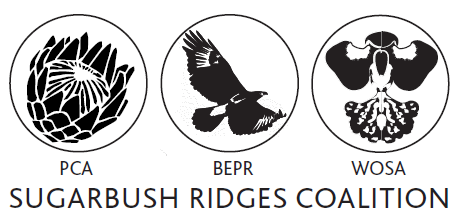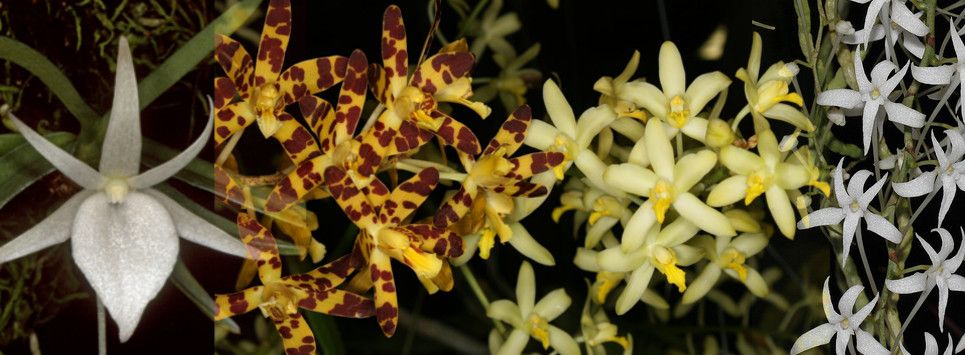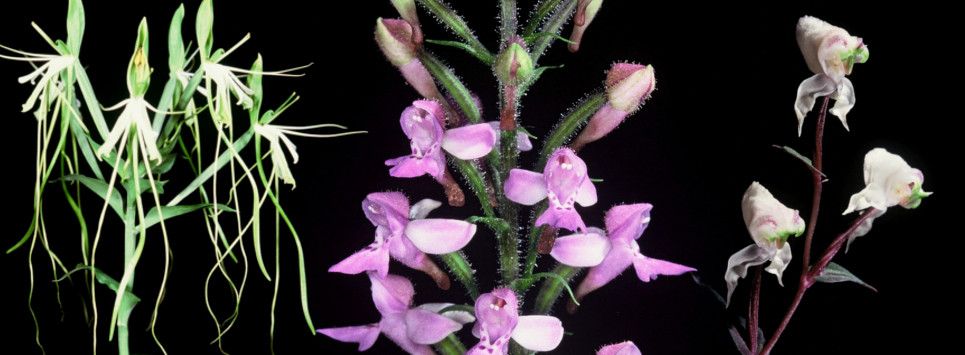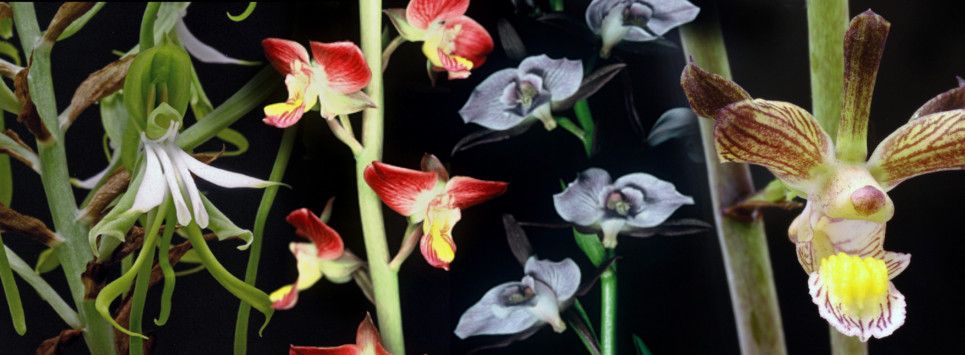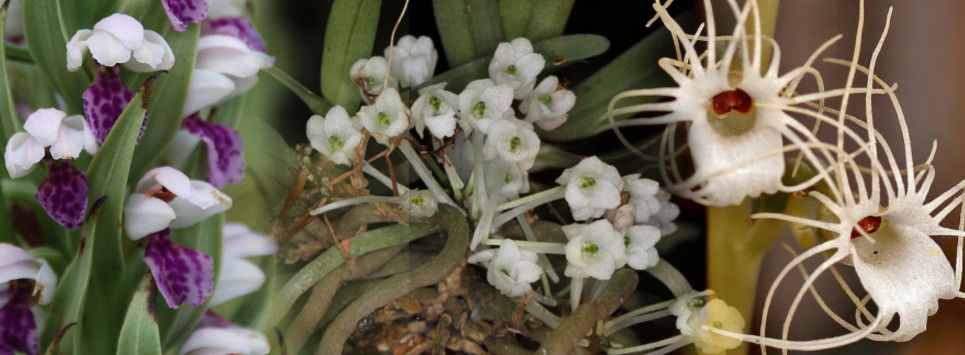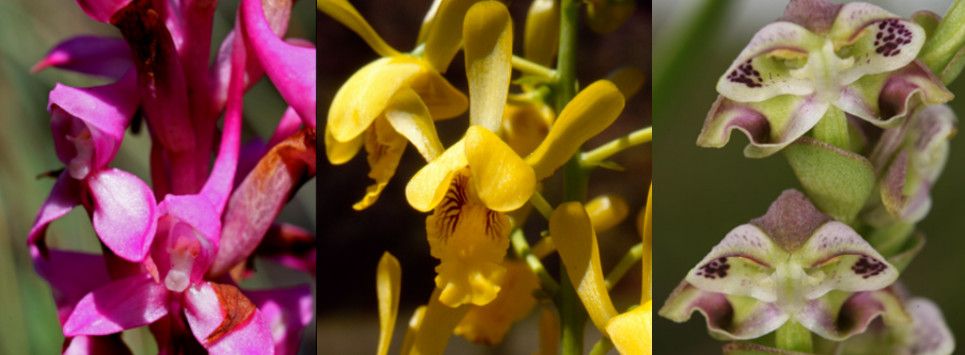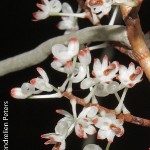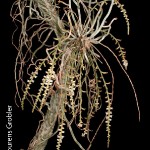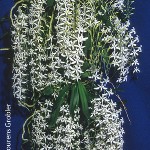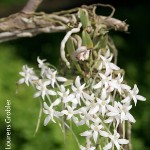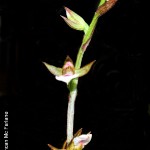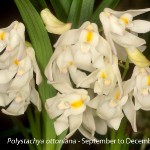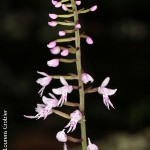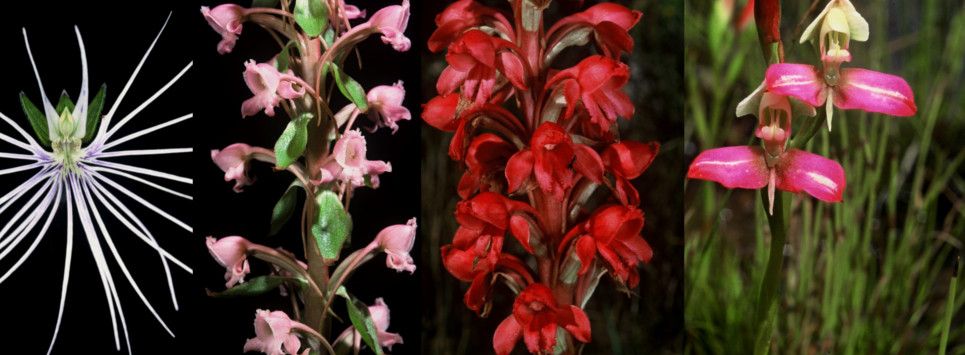
Welcome to WOSA
Very little is known about indigenous orchids by the public who are largely unaware that there are just under 500 species of which 45 are endemic (only occur in South Africa). Very little research has been carried out regarding ecology, conservation and propagation although a number of species have become extinct and habitat destruction is progressing at an alarming rate. Up until now there has been no attempt to address these issues on a National scale and Provincial legislation and cooperation is fragmented. Only through a focused National integrated effort that engages the public and all roll players will survival of orchids be assured.
Proteadal Development Halted!
The Proteadal Conservation Association, in association with Wild Orchid Southern Africa, is delighted to announce a major victory for conservation in South Africa, and for the preservation of the irreplaceable habitat and threatened biodiversity of the West Rand Ridges around Proteadal along the southern border of the Walter Sisulu National Botanical Gardens in Krugersdorp. This includes the habitat of the only viable population of the critically endangered Albertina Sisulu Orchid and the hunting ground of the majestic Black Eagle.
The decision to grant authorisation for the development of almost 3000 high density residential units on a portion of Mogale City property known as Proteadal, was set aside and made an order of the South Gauteng High Court on 31st July 2019.
In late 2015, a review application was lodged by the Proteadal Conservation Association against the MEC of Gauteng Department of Agriculture and Rural Development (GDARD), after he approved the development on appeal, effectively overturning the underlying 2014 decision by the Head of Department of GDARD, to deny authorisation for the development. Wild Orchids Southern Africa supported this review application as respondent in the court application.
Today, the 2014 decision still stands as an order of the court, so the orchid is safe for now.
This victory is not just for the Proteadal Conservation Association and their very able environmental legal team Webber Wentzel and Counsel, but for all the other organisations and individuals who contribute towards the environmental care of these ridges to make them worth preserving.
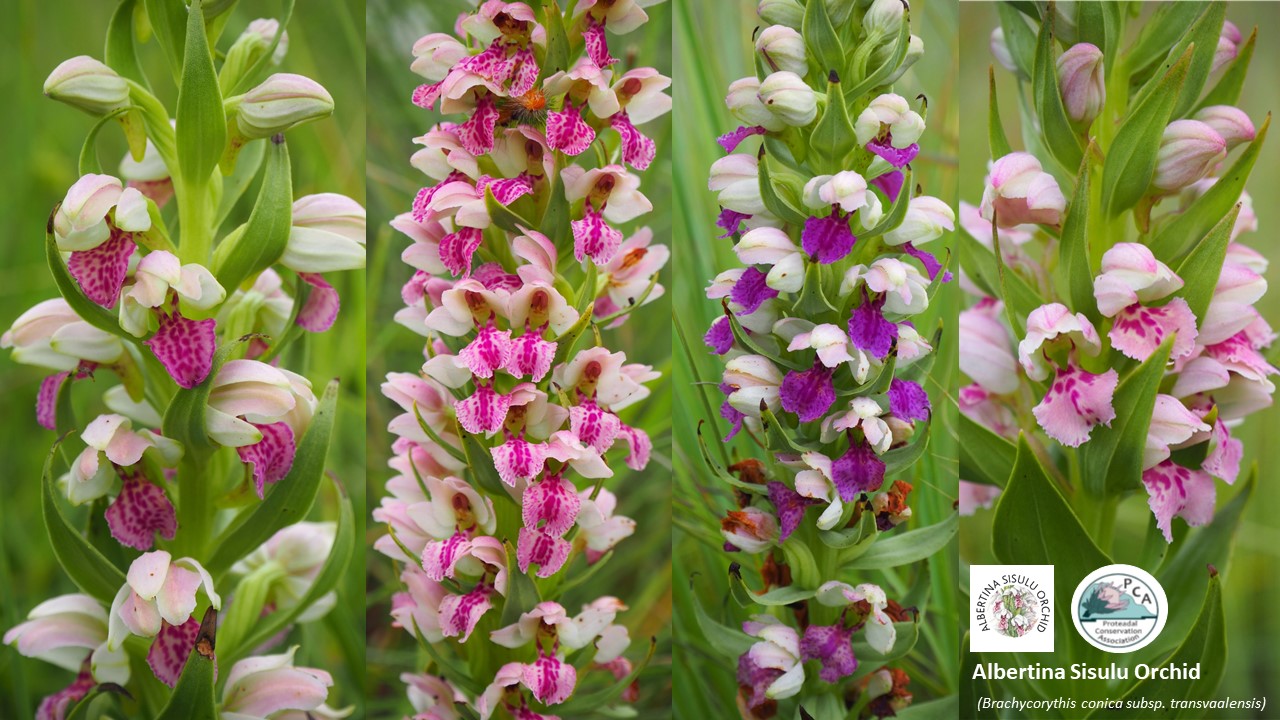 |
| Various colour forms of the around 120 plants of the critically endangerd Albertina Sisulu Orchids from the Krugersdorp colony |
 |
| Aerial view of the West Rand Ridge with the R28 highway that runs up and over the ridge in the foreground |
Substantial Donation Received by WOSA
In memory the first anniversary of WOSA's founding member Bill Mincher's passing on 17 June 2019, his daughter Jane Kratz has donated and amount of R 60,000.00 to WOSA this past Wednesday the 17th of June 2020.
The money is to be used for the planning and execution of WOSA6 - the next Wild Orchids Southern Africa Conference. As a result of the COVID19 pandemic this has been postponed to tentatively take place in the spring of 2021.
The executive committee of WOSA is extremely grateful for this donation. Jane and some of the WOSA members put a lot of work into raising the R 60,000.00.
Amidst the pandemic WOSA Executive Chairman Marinus Kort and WOSA president Karsten Wodrich briefly met up with Jane for the official handover of the donation.
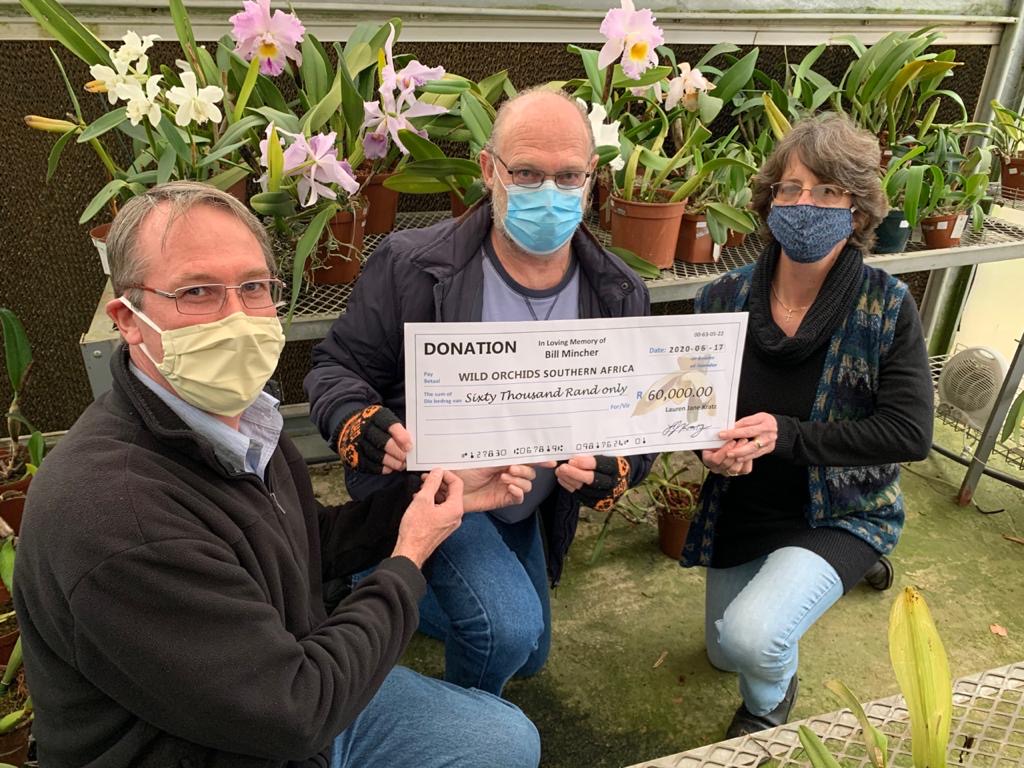
Jane Kratz (right) handing over a cheque for R 60,000.00 to WOSA Executive Chairman Marinus Kort (center) and WOSA President Karsten Wodrich (left)
Microcoelia aphylla
Description
Slender leafless epiphyte, with stems up to 400 mm long and only 2 mm in diameter, climbing with hook-like roots. Inflorescences lateral, many all along the stem. 8-16 flowers are white, with contrasting, rust-red sepal tips. Column also rust coloured. Spur short and generally curled. Syn: Solenangis aphylla.
Microcoelia exilis
Description
Slender, leafless epiphyte, with stems up to 40 mm long and 3 mm in diameter. Roots numerous, branching and twisted, not attached tightly to the host. Inflorescences lateral, several and up to 150 mm long with about 50 flowers. Flowers are white, 1.5 mm in diameter. Sepals and petals similar.
Microcoelia obovata
Description
Slender leafless epiphyte with stems up to 30 mm long. Roots are usually well attached to the host. Inflorescences lateral, up to 10 simultaneously up to 90 mm long. Flowers up to 10, white with a yellow brown column and anther cap. Petals and sepals similar and egg shaped.
Mystacidium capense
Description
Slender epiphyte with stems of 10-25 mm long. Leaves strap-shaped, unequally bilobed, up to 120 mm long and 22 mm wide. Inflorescences lateral, one to several, up to 180 mm long, laxly flowered. Up to 13 flowers are white with a glistening texture, 25-30 mm in diameter, sepals and petals similar, linear to spear-shaped, spur tapering, up to 60 mm long. Similar to Mystacidium venosum. Pollinated by hawkmoths. Colony forming. Fragrance sweet, jasmine-like at night.
Mystacidium venosum
Description
Miniature epiphyte with stems 10-15 mm long. Leaves strap-shaped to elliptic, unequally bilobed, up to 45 mm long and 10 mm wide, often poorly developed or absent. Inflorescences, one to several, up to 50mm long,4-10 flowers, white and 15 mm in diameter. Petals and sepals reflexed, spur tapering, up to 45 mm long. Similar to Mystacidium capense, distinguished by different flowering time and shorter leaves and spur. Pollinated by hawk moths. Fragrance sweet, scented at night.
Neobolusia tysonii
Description
Slender terrestrial up to 400mm in height. Stem has a raised ridge along it's length. Leaves 2 basal, spreading, narrowly elliptic to oblong up to 155mm long, a few small sheathing leaves higher up. Inflorescence lax, up to 150mm long, with 2-12 flowers which have brownish green sepals, off white petals, white lip with pink markings at the base. Spur is absent.
Platylepis glandulosa
Description
Creeping terrestrial becoming erect, up to 500mm tall. Leaves evident only on the bottom half of the erect section, stalked with conspicuous veins, egg shaped, up to 50mm long. Inflorescence congested, ovoid, conspicuously hairy, up to 100mm tall. Flowers green to greenish brown and white, lip white. Median sepal forms a hood with the petals. This genus has only one species.
Polystachya ottoniana
Description
Very slender epiphyte or lithophyte, up to 150mm tall. Pseudobulbs adjacent, often forming long chains, conical, up to 25mm high. Leaves 2 or 3, linear to strap-shaped, up to 130mm long. Inflorescence lax, as tall as the leaves, simple and hairy, 1-5 flowers, cream or white, lip with central yellow marking. Sepals subequal; median sepal narrowly oblong up to 13mm long, lateral sepals 13mm long, petals narrowly spatula to spear shaped up to 11mm long, lip 3-lobed up to 12mm long, 8.5mm wide. Hybridizes with Polystachya transvaalensis.
Stenoglottis fimbriata
Description
Slender epiphyte, lithophyte, or terrestrial, which can grow up to 400mm tall. Leaves 6-10 in a basal rosette, strap-shaped to narrowly spear-shaped, spotted, with wavy fringes. Inflorescences lax, 5-30 flowers, which are lilac with darker spots. Sepals similar and up to 8mm long, petals are shorter and enclose the column. Spur absent. A very variable species in size and colouration. The fleshy, hairy roots attach themselves onto quite steep rock faces, preventing excess water and debris accumulating. Colony forming.
For more information regarding the preservation of South Africa's wild Orchids or if you would like to get involved please email This email address is being protected from spambots. You need JavaScript enabled to view it. or complete this short form Contact Us and we will contact you.
